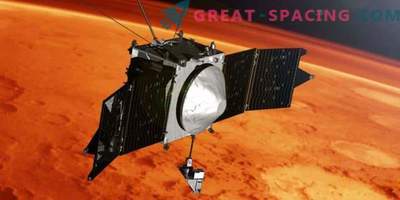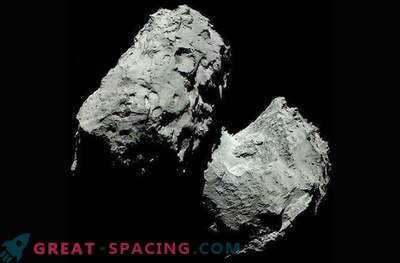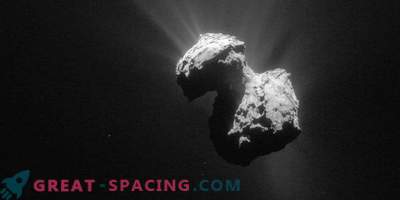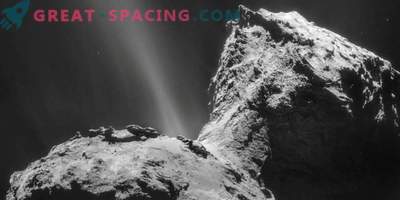
In October last year, a rain of metallic star dust illuminated the sky of Mars as a result of the comet Siding Spring coming from the Red Planet.
According to the onboard instruments of the NASA-MAVEN spacecraft, the presence of sodium, magnesium, aluminum, chromium, nickel, copper, zinc, iron and other metals was found in the high layers of the atmosphere of Mars. This can only be directly related to the destruction of the comet.
Nick Schneider from the Laboratory of Atmospheric and Cosmic Physics at the University of Colorado said: "It must have been a breathtaking meteor shower."
To measure the impact of a comet on the Martian atmosphere, the instruments of the MAVEN spacecraft were commissioned even before its arrival.
Referring to the high content of magnesium and iron shown by MAVEN through an image of an ultraviolet spectrograph, Nick Schneider noticed that tens of thousands of “shooting stars” were visible hourly above the surface of Mars, which lasted several hours.
“I’m not sure that anyone has seen anything alive, the closest thing in the history of mankind can be the rain of Leonids of 1833,” said Schneider.
Metal ions, the remnants of pebbles and other particles from a burning comet, were split into atoms when they entered the Martian atmosphere at a speed of 56 km per second (125 thousand miles per hour). The same thing happens on Earth. Although it did not happen to us, the spacecraft arrived at the right place at the right time to discover a lot of ions from a new comet. “This is the first time we have discovered a complete group of sodium and zinc metal ions,” said Meghdi Benn, a researcher at the University of Maryland and Goddard Space Flight Center at NASA, whose team works with neutral and ion mass spectrometer. “This device captures, detects and counts charged particles of metal atoms in the upper atmosphere of Mars. The first measurements with the equipment were carried out in unprecedented and unpredictable conditions, ”he said.
“We know all the information about the comet Siding Spring due to the fact that it is the source of dust particles. We know its speed and origin, ”said Meggie Benna. The data obtained from the composition of the comet can be used to explain the details of what is happening in the work of the ionosphere of Mars and Earth as they approach comets and asteroids. “Here we really have a controlled experiment. We immediately measured the ions, soon after their capture. If we were to wait a week or a few days, we could not have a clear discovery. ”
Meghdi Benna and Nick Schneider are leading authors of various papers. The relevant data about their activities published on the website of the journal Geophysical Research Letters.
However, one of the things that cannot be displayed in documents is the intuition at work. The MAVEN spacecraft was not intentionally launched to study the comet Siding Spring. It was just luck that the ship arrived at that time with the necessary research equipment. Nick Schneider, proceeding from the work, and Megdi Benn said: “If someone said that it was necessary to determine the elemental and isotopic composition of the dust of a comet from the Oort Cloud, then any sane person would say that this is impossible. However, this is what has been done, and chemists have to do this for a while. ”
“The funny thing is that in fact we did not plan on getting this data through the spacecraft hardware. A few months before we talked about Siding Spring, we figured out whether it was possible to take measurements, ”said Meghdi Benna. As it turned out, the neutral and ion mass spectrometer is an analogue of equipment from the ship CONTOUR, which was launched in 2002 to study comets. But this device has not fulfilled its task. “Thus, similar instruments, in the end, the study of the comet conducted MAVEN. This is a great lesson, never lose hope, ”said Meghdi Benna.











































